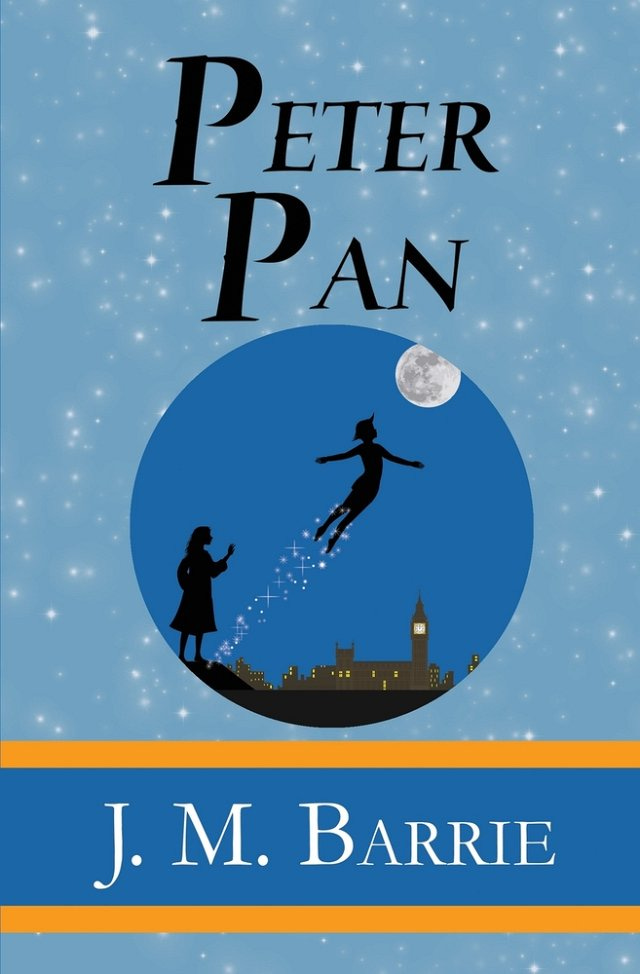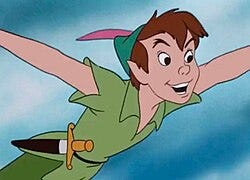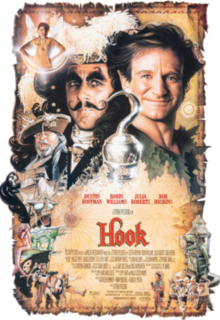Peter Pan is a delightful book.
[And yes,
, this one should also be on the top of your reading list!]The story of Peter Pan is one not new to many of us. There’ve been variations on this theme for some time, probably the most widely known being the 1953 animated film by Walt Disney.
Another version accurate in spirit to the book is the 1991 movie Hook with Robin Williams as Peter and Dustin Hoffman as Hook. Steven Spielberg, the film’s director, said that he was inspired to film not only Hook, but Superman, E.T. and Batman. He said that all of those films had been inspired by his own mother reading to him as a child his first flying superhero: Peter Pan.
Peter Pan’s story originated at the turn of the 20th century. It was first referenced in the book The Little White Bird in 1902 by Scottish playwright and novelist J.M. Barrie, who subsequently gave Peter his own play in 1904. Barrie eventually turned Peter Pan into this novel in 1911.
Though I would call the entire novel endearing, what I found especially so was the inscription found at the very beginning of the book:
The Peter Pan Bequest
In 1929 J.M. Barrie donated all rights in Peter Pan to Great Ormond Street Children’s Hospital. In 1987, fifty years after Barrie’s death, copyright expired under UK law. However, the following year, a unique Act of Parliament restored royalty income from all versions of Peter Pan to the hospital, which means that very sick children there will continue to benefit from J.M. Barrie’s generous gift for as long as the hospital exists.
I love this! Every time books are purchased, I don’t know if a fairy is healed, but some children might be!
On To the Story
If you look up Peter Pan, you would see the story is described as being of a boy who would not grow up. But, that is only a part of it. When my husband read this story as a little boy, he thought it was a story about pirates and adventures. When my husband read the story to our boys when they were little, there were many months where they wouldn’t leave the house without their Captain Hook coats, pirate eye patches, and construction paper parrots taped to their shoulders. (To be fair, I was reading Treasure Island to them at about the same time, so we went through a whole pirate phase.) For me, I thought it was a story about running away to a magical, fairy island. Steven Spielberg thought it was a story about a flying super hero. The story spoke to each of us differently. The story is a tale of imagination and a tale of heroic adventure.
As I read the story now, as a mother of adult children, I have found the story to have opened up an entirely new dimension: a tale of loving and respecting mothers and motherhood.
I think the book also gives quite a bit of insight into understanding people in general. I loved that there was not a single character that is all good or all bad, but rather as in life: a combination of the two.
There’s Peter who is both good and bad. Though he is the hero of the book, we are shown bit by bit that not growing up does not always make you the most thoughtful. Yet, we cannot help but love him despite his immaturity and selfishness.
Peter has escaped to Neverland, a land of imagination inside of you, which all children simultaneously know and share with others and yet is one of their own imagination.
There’s Tinker Bell who is a mostly all good, but sometimes very, very bad fairy who loves Peter, but is also very jealous of Peter’s attentions towards Wendy.
There’s Wendy who is mostly all good. She is still a child, though on the verge of growing up, and is convinced to leave her home to be a mother to Peter, her brothers, and the Lost Boys.
There’s Smee, oh lovable Smee! He thinks he is feared, but no matter what he does, the children still love him. He offers to save Wendy, if she were only to be his mother.
There’s Captain Hook, a pirate who is both bad and good. He really wants Wendy for his own mother and is gloomy that “No little children love me.” He is the villain that we cannot help but feel sorry for!
The entire book is an exercise in perspective shift, perpendicular thinking, and the oddly specific fantastical that really make you think. It also makes you want to believe that all of these things really do exist, but that you simply forgot them because you have grown ever so slightly too old to remember.
I think this is a wonderful book to read to children. It really does spark the imagination. It leads the way for activity and play-pretend, which allows children to think/play out many difficult concepts, but in a child-friendly playful setting. And, even if you’re like me and not a spring chicken, I think it will still delight your inner child.








Fantastic summary! I really enjoyed reading the history and evolution of the story. I'm adding the original book to our reading list!
Noted and added. Haha. Our (#10) grandson is 2 1/2, I’ll keep Peter Pan handy for us to enjoy! Thank you!